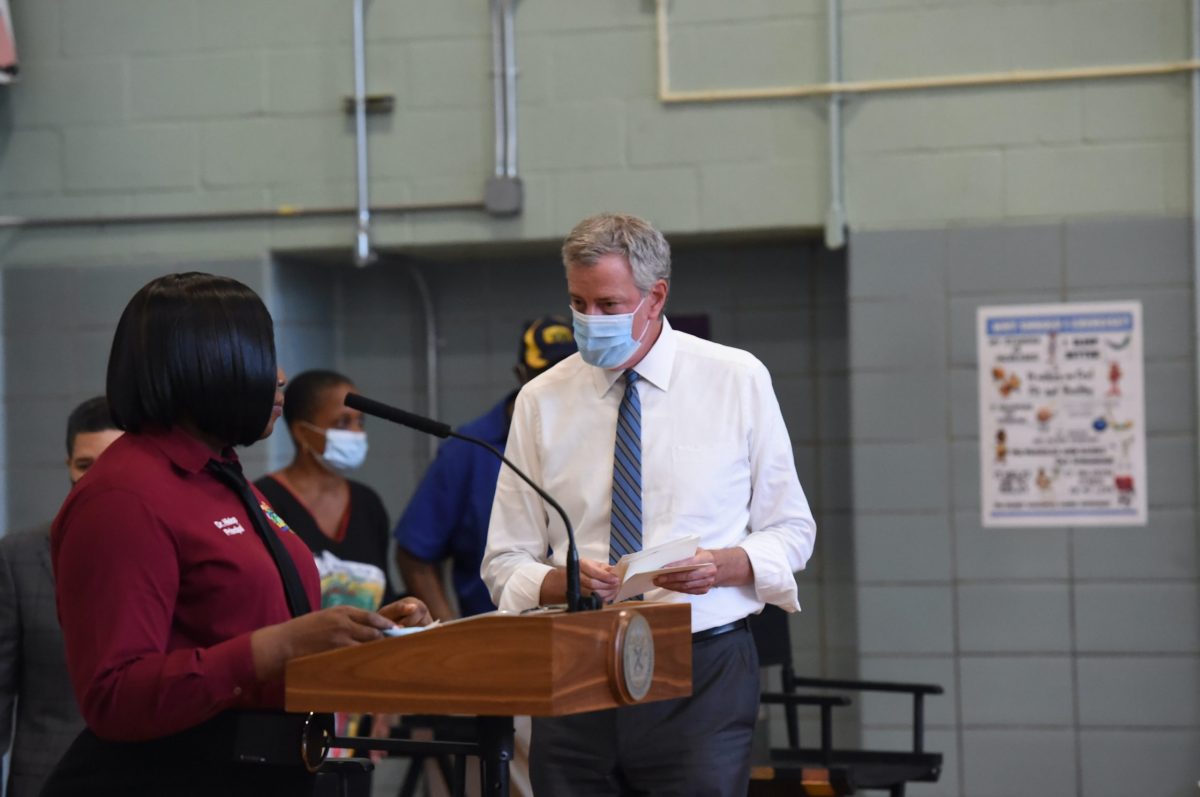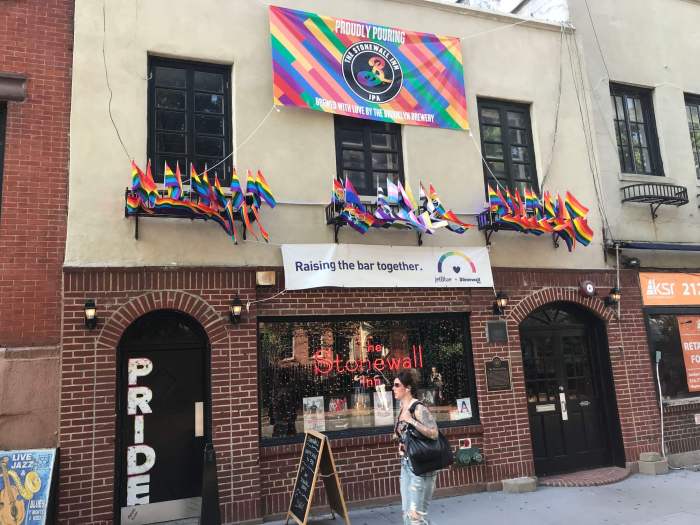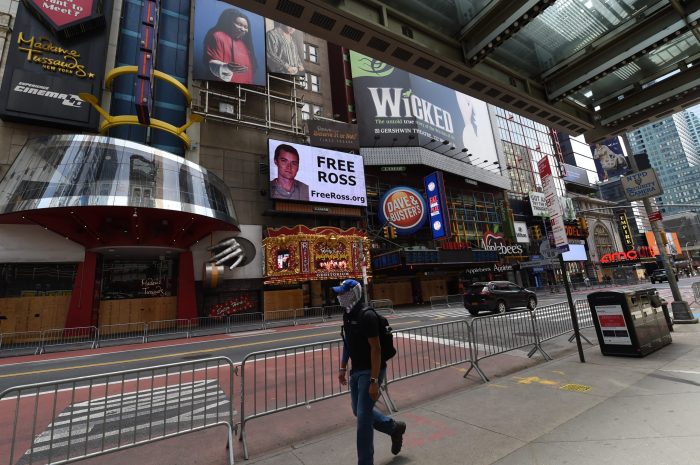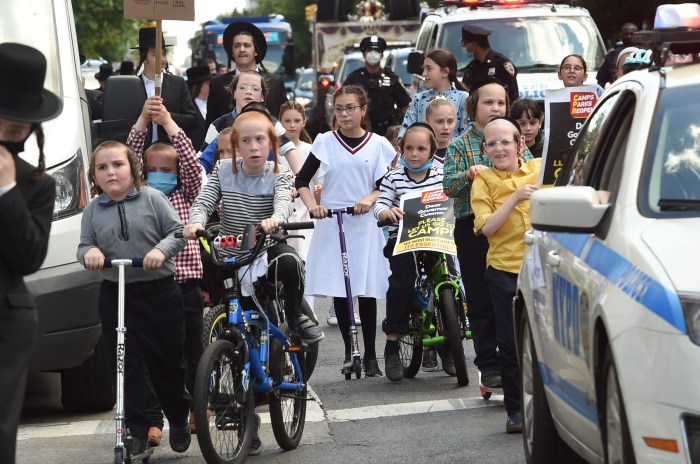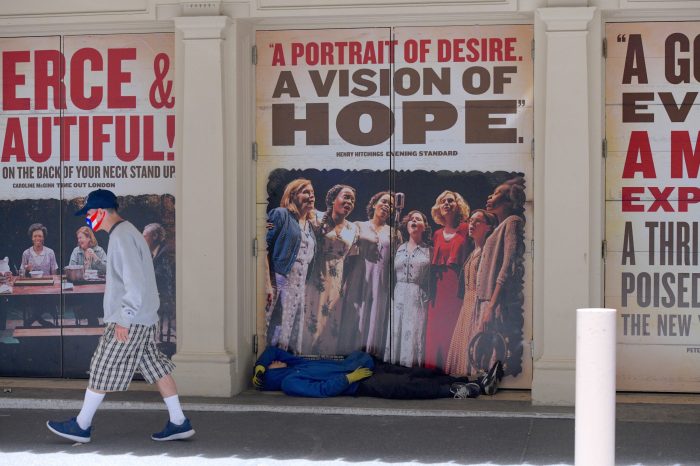Mayor Bill de Blasio defended his decision to abruptly close the city’s public schools to in-person classes Thursday, saying his administration was working on a set of of tougher standards to reopen classrooms while battling a second wave of COVID-19, without giving many specifics beyond increased testing for the virus.
“We can’t just stand pat with a strategy that worked before when conditions are changing, we need tor reset the equation. We need to come up with even more stringent rules to make schools work, and testing is going to be absolutely crucial,” de Blasio said at his daily press briefing on Nov. 19.
Hizzoner confirmed New York City schools would go back to remote-only instruction Wednesday afternoon amid a rise in coronavirus infections, following a leaked email by Schools Chancellor Richard Carranza to principals and a heated press conference by Governor Andrew Cuomo, who yelled at reporters when asked whether the nation’s largest public school system would close the next day.
The closure will be at least through Thanksgiving, and the mayor’s decision came after the city surpassed a seven-day average infection rate of 3%, a number the administration, health officials, and the teachers union agreed on before schools reopened in September, along with measures such as cleaning, better ventilation, and mask wearing.
De Blasio said that the threshold was a conservative “gold standard” to ensure parents, teachers, and staff felt safe to return to school buildings at the time, but that school officials we’re working on stricter guidelines to reopen amid the threat of a second wave.
“We want to look at geographical issues, test positivity levels, we want to look at a lot of things,” the mayor said. “We’re looking at anything and everything that can contribute to making it safer in an atmosphere where the positivity levels around us are growing.”
De Blasio added it was “just a matter of time,” before the city enters the state’s Orange Zone designation, which would mandate the closure of indoor dining, gyms, hair salons, and cap gatherings at 10 people.
That would be triggered if the state’s measurement for COVID-19 positivity across seven days reaches 3 percent, which Wednesday was still below at 2.5 percent.
By the city’s measurements, Thursday’s seven-day rolling average infection rate was 3.01 percent at 1,255 reported cases.
Several city elected officials slammed the mayor Thursday for providing such short notice about the closure, saying he and Cuomo needed to work together, rather than sow confusion.
“We see bickering from two executives, the same type of bickering we saw at the beginning of March that did not bode well for us,” said Public Advocate Jumaane Williams at a virtual press conference. “What we’re seeing being displayed is the worst dysfunction, I believe, of our government at the worst possible time.”
The City Council’s Education Committee chairman, Brooklyn Councilman Mark Treyger, lambasted de Blasio and Carranza for failing to provide tablets and computers to some 60,000 students who have requested them ahead of the shutdown, leaving them without a means to access remote learning.
“The only thing worse than over 60,000 kids still without a device in November is entering the school year knowing that thousands of children are still without a device and reliable internet,” Treyger said during the presser. “For a mayor who ran on a platform of ending the Tale of Two Cities, that tale is fully wide open right now.”
Carranza said the city has ordered an additional 100,000 devices with 40,000 arriving daily, but attributed the current delays to a high demand for the devices, saying manufacturers were struggling to keep up.
“We’re not the only school system in America, in the world to be ordering these devices,” the chancellor said. “There is a real supply side issue.”
In a related story, later on Thursday, Brooklyn Borough President and Mayoral hopeful Eric Adams visited the Broadway Junction station, where he distributed masks to commuters.
“We want to keep our city safe because the heart of the economic engine of this city is our transportation system – if people feel safe riding the subways then we will be able to open our city again,” Adams said. “We opened the businesses, we are also going to open the shops, the stores, the delis, so this is all connected. It starts right here on the ground by giving out masks, and that’s why we are here. The police officers, transit officials, our councilwoman – we are all doing this together – this is how it is done.”
With reporting by Todd Maisel



